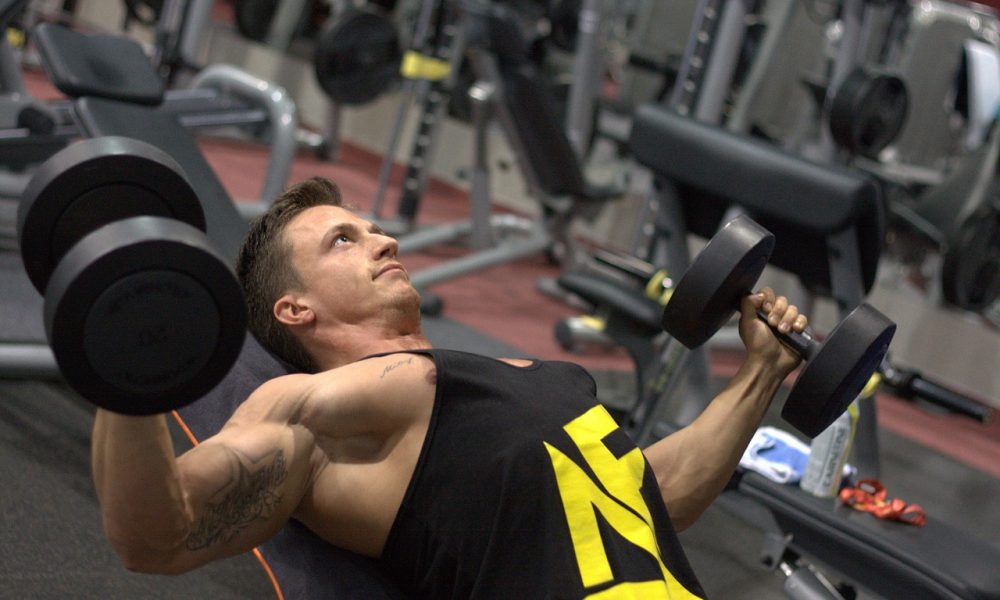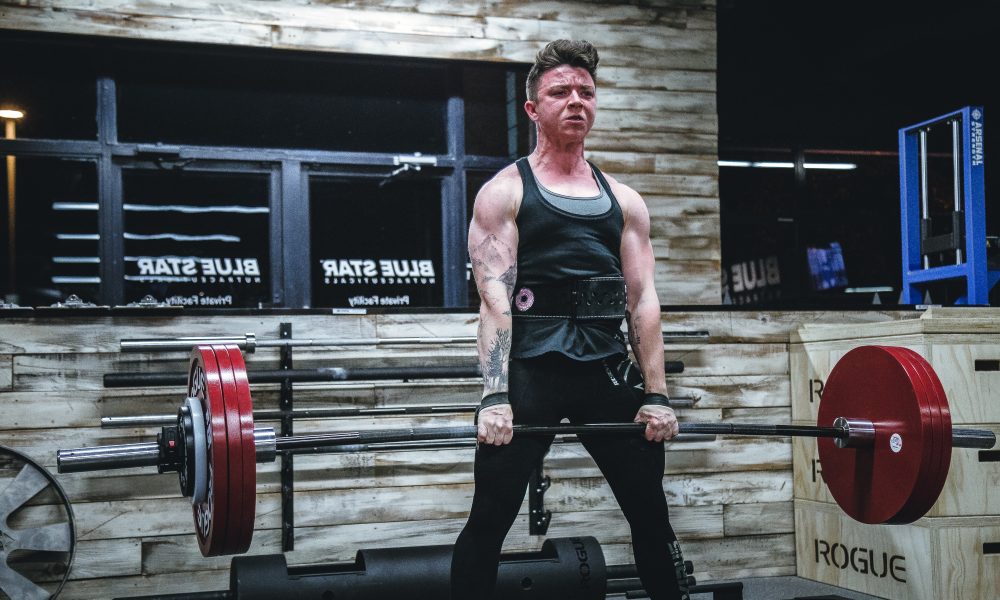
Is Fat Loss Harder For Women?
I like equal opportunities as much the next person, but we live in a world where the playing field is rarely equal. So, let’s answer the politically incorrect question of is fat loss harder for women?

Everybody thinks there’s some sort of magic in a specific training split. We got old school bodybuilders who swear their time-tested training split gets them muscles the size of Godzilla.
You then get young high school fanboys worshipping these bodybuilders, quickly adopting the same training split basically as a religion. These young fanboys then grow up to become wanna be bodybuilders who think they’re cool because they have a discount code for some fruity supplement in their Instagram bio.
They eventually gain a decent following and attribute their success to their glorious training split, and this unfortunate cycle repeats itself. Fortunately, many fit pros are starting to realize training splits aren’t all that important.
This is not to say you can’t have a favorite split or that training splits don’t matter at all, but training splits only matter because they’re dictated by more important factors like adherence, volume, and frequency.
Before, I breakdown the different training splits, it’s important to go over how to find which training splits are most ideal for you.
First, determine how many days you want to workout. Some splits become more or less viable depending on how many days you train.
For adequate hypertrophy, a minimum of 3 days a week is highly suggested.
if there’s a training split that you identify strongly with so much that you would die for that training split, you’re probably going to make lots of gains on that split even if it’s less ideal.
When you enjoy a style of training, you’re more likely to train harder and stick to that program consistently.
There’s no point in going with the physiologically optimal split if it means you hate it. You won’t train as hard and are less likely to adhere to it consistently.
That being said, it pays to enjoy different splits as you have more options for optimization and can even switch between cycles of various splits. We’ll talk more about this later.
Assuming volume is matched as closely as it can be, the main difference between different splits is the frequency that a muscle is trained.
As discussed in my frequency article (read that first, studies are in that article), frequency isn’t super important unless your training volume for a muscle group is higher.
Still, the current scientific research tells us 2 things:
This means with equal volume, training splits that only hit a muscle once a week will be generally inferior. This is especially true as there is evidence that a muscle can only be trained to failure for 5-10 sets in a given session before additional sets become time wasted or detrimental to hypertrophy (1,2).
With more frequency, you’re able to distribute higher volumes more optimally to avoid wasted sets. Lastly keep in mind, the frequency you choose doesn’t have to be the same for every muscle group.

All training splits no matter how unique, fall within a spectrum of frequency. Many bodybuilders traditionally train with lower frequency splits which is why so many of their fanboys blindly defend these splits despite controlled scientific evidence disagreeing with them.
I mean, if Ronnie Coleman says body part splits are best, it must be undisputed truth right?
To be clear, I’m not saying lower frequency splits don’t work. It’s just that other splits work just as good if not better thanks to optimal frequency.
Let’s compare the pros and cons, so you can decide for yourself. We’ll start with lower frequency splits.
Body part splits train one muscle group a day and are also referred to as bro splits as many meatheads favor them.
Sample:
Monday: Chest (cause all bros train their chest on Mondays, insert fist bump here)
Tuesday: Back
Wednesday: Legs
Thursday: Biceps and Triceps (arm day)
Friday: Shoulders
Saturday: Rest
Sunday: Rest
Double body part splits are where you train 2 body parts per day. These splits are also common among meatheads, but don’t really have an official name, so for now I’m calling them double body part splits.
Sample:
Monday: Chest and Triceps
Tuesday: Back and Biceps
Wednesday: Legs and Shoulders
Thursday: Chest and Triceps
Friday: Back and Biceps
Saturday: Legs and Shoulders
Sunday: Rest
Push/Pull/Legs is where you train your upper body pushing muscles one day, then your upper body pulling another, and then your lower body another. You’re essentially training the muscles that function together on the same day. The characteristics are the same as a double body part split.
This split is probably the happy medium between low and high frequency training splits. Pretty much, if you want to fit in with the bros and the evidence-based lifters, you do this split.
Sample:
Monday: Push (chest, triceps, shoulders)
Tuesday: Pull (back, biceps, traps, rear delts)
Wednesday: Legs (all lower body muscles)
Thursday: Push
Friday: Pull
Saturday: Legs
Sunday: Rest

The upper/lower split is pretty self-explanatory. You train upper body one day and the lower body the next. Personally, it’s the split I’ve noticed most lifters turn to after giving up years of the body part splits. It also forces you to train your legs at least twice a week which is great for hypertrophy if you’re only used to training them once a week.
Sample:
Monday: Lower
Tuesday: Upper
Wednesday: Rest
Thursday: Lower
Friday: Upper
Saturday: Rest
Sunday: Rest
A full body push/pull split isn’t quite a full body split, but it’s similar to an upper/lower split in that you’re training half your body one day and the half the next. One day, you’ll train your pushing muscles from head to toe which are primarily the muscles in the front of your body and on pull days, you’ll train the muscles on the back of your body.
This split has all the same characteristics as an upper/lower split although it’s generally less popular.
Sample:
Monday: Pull (back, traps, biceps, rear delts, glutes, hamstrings)
Tuesday: Push (chest, shoulders, triceps, quads, calves)
Wednesday: Pull
Thursday: Push
Friday: Pull
Saturday: Push
Sunday: Rest
A hybrid split is the unicorn of training splits and is my personal favorite. It’s an uneven split that allows for flexibility, variety, and specialization if needed. And yes, it’s perfectly fine to train things unevenly.
It has all the benefits of any high frequency training split with the only drawback being that it might be too complex to program especially if you’re used to traditional splits.
Here’s an example of a hybrid split for someone who might want to emphasize their shoulders (trained 4x per week) and calves (trained 4x per week) because they’re lagging body parts.
Sample:
Monday: Upper + Calves
Tuesday: Lower
Wednesday: Full body
Thursday: Upper
Friday: Lower
Saturday: Shoulders
Sunday: Rest

Full body splits are exactly what they sound like. You train your upper and lower body on the same day. You don’t necessarily have to hit every muscle directly, but a majority of body parts get some sort of stimulation each training day.
Full body workouts are great when you’re short on time, have an unpredictable schedule, or simply prefer to do less volume per body part each workout. I mean, 15+ sets for legs in one session can only be tolerable for so long right?
Sample:
Monday: Full body
Tuesday: Full body
Wednesday: Rest
Thursday: Full body
Friday: Rest
Saturday: Full body
Sunday: Rest
Higher frequency splits have more evidence favoring them, but because our bodies are great at adapting, there may be a case for cycling through different splits.
This is what I do with myself as well as my clients. We’ll go through 1-6 months on one split and then switch to another. At most, it could enhance hypertrophy and if not, it at least prevents training from getting bland.
If you haven’t changed your training split in a while especially if you’re doing body part bro split, I encourage you to take a break and experiment with a higher frequency split.
Grab my free Stupid Simple Scroll to Mastering Hypertrophy

I like equal opportunities as much the next person, but we live in a world where the playing field is rarely equal. So, let’s answer the politically incorrect question of is fat loss harder for women?

If you’ve ever attempted to lose weight, you might’ve noticed as you lose more weight, the journey gets tougher. You put in the exact same sacrifice day in and day out, but the results come slower and slower.

Let’s talk about those food cravings that sabotage your weight loss efforts. By definition, a craving is an intense desire to consume a particular type of food that is hard to resist.